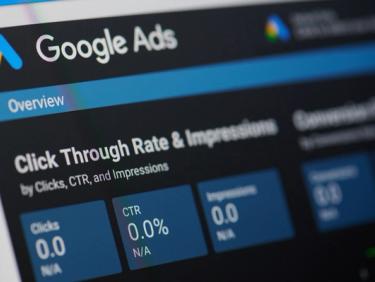Insight8 min read
Performance max or standard shopping campaigns: Where should you focus your efforts?
Tue Jun 13 2023 | Marketing Team

- Insight
- Performance
- PPC
Tags
The world of paid media is constantly evolving with new and improved forms of advertising cropping up throughout the year. While the online space remains as competitive as ever you may be wondering which tactics will be best suited to help you get ahead of the competition. While standard shopping campaigns have dominated the paid media landscape for years, the introduction of performance max has left many brands wondering where this fits into their strategy. In this blog, we look at standard versus performance max (pMax) campaigns and why pMax should be on your radar.
What is a standard shopping campaign?
Standard shopping campaigns are nothing new and have long been a fundamental aspect of advertising on Google. You’re probably well-versed with these ad campaigns but for those who are new to the game, standard shopping campaigns are simply the campaigns you create to place your shopping ads on Google. To run a shopping ad you have to sign up to both Google Merchant Centre and Google Ads. These two platforms work together using product information and your set budget and then place your ads based on the information you’ve provided.
The pros and cons of standard shopping
Although they sound simple in nature, and fundamentally they are, standard shopping campaigns require a hefty bit of time and resource to get them off the ground. Unlike more automated ad campaigns, standard ads need manual testing from your team to ensure your ads hit the sweet spot. Alongside this, standard ad campaigns are more limited to where they can be posted; focused only on the Google Shopping tab, appearing in searches and in the Google Image tab. While these are certainly drawbacks, standard campaigns have their own set of positives. After the initial setup, you’re left with ads with high targeting capabilities, complete control of your campaigns and the option to adjust your bids if needed.
What does performance max mean?
User behaviour online is becoming infinitely more complex. Consumer purchasing is not a linear path and how people interact with brands online is changing. With a typical person using a multitude of different devices to access the internet, targeting people has never been more complex. Google recognised this and the need for ad campaigns to be more widespread than ever before. But with time and resource an issue, the tools to create ads needed to change. Performance max first hit the scene back in 2021 but only recently took over from smart campaigns, which we bid farewell to in 2023. Performance max differs from standard ads in that it’s completely automated, using smart bidding to optimise performance.
How does it work?
You simply need to upload your assets and Google runs a number of tests to ascertain which will work best across all your campaigns. From their testing, a single campaign is pushed out across all of Google’s platforms. The process relies on machine learning and is fully automated from the moment you upload your assets. Sounds great, right?
The pros and cons of performance max
While fully automated processes sound great, and they do have their plusses, it would be careless not to consider the downside. Performance max campaigns take away the amount of control you have over your ads, with the decisions left down to automation based on testing. This can impact the overall quality of the ads people will see and also create questionable targeting. However, it’s not all negative. Performance max campaigns have addressed a huge need in the space to help brands push their ads far and wide, without the need for additional team resources. Once assets are uploaded, machine learning takes care of the rest providing ad campaigns with unparalleled speed and ease. These ads are then showcased across all of Google’s platforms, helping your ad reach more users than ever before.
How to make the most of performance max campaigns
Performance max undoubtedly takes some getting used to and the know-how to make sure your campaigns succeed. We see many new clients coming to us wary of pMax, having been stung before. But we have some tips and tried and tested measures to ensure campaigns deliver, every time:
- 1Don’t spread yourself thin: While it’s entirely doable to have both pMax and standard shopping campaigns running at the same time, Google will always give preference to your pMax campaigns. If you’re running both simultaneously, with the same products, your standard shopping campaigns will fall to the wayside in comparison. We prioritise your pMax campaigns but run active, low-priority, catch-all shopping campaigns alongside to ensure your full inventory is covered.
- 2Focus on moving forward: It can be tempting to stick with what you know, after all, if it works why shake things up? But time and time again we’re seeing stronger results from pMax campaigns compared to that of standard shopping. In some cases, clients may feel their results don’t match their expectations when trialling pMax, which is why we’ve developed different strategies to ensure your campaigns excel.
- 3Work with experts: To make sure your pMax campaigns deliver, we have a number of tactics and optimisations we can test for maximum impact, including:
- Trialling a different campaign and/or asset group structure
- Adjusting the campaign settings including the bid strategies, in line with the account’s KPIs
- Testing new assets such as images, videos and audience signals
- Testing a feed-only approach
- Using pMax experiments to test how it performs vs standard shopping
- Exclude branded search terms and/or irrelevant generic search terms adding them as negatives.
Embrace the future
Performance Max was brought on the scene to help marketers and your campaigns excel, without the need for such a labour-intensive process. In a bid to continuously improve this tool, Google have recently announced how they plan to use generative AI to enhance pMax. Already showcasing the benefits of AI, those who use pMax in their campaigns are boasting around 18 percent higher conversions at a similar cost per action to other campaigns. But what does the introduction of generative AI mean? We'll let Google do the explaining:
"‘We’re bringing generative AI to Performance Max to make it even easier for you to create custom assets and scale them in a few clicks. Just provide your website and Google AI will start learning about your brand to populate your campaign with text and other relevant assets. We’ll even suggest new images generated just for you, helping you stand out to customers across a wider range of inventory and formats.’ Google Ads News“
While this will benefit a whole host of brands, this is a particularly exciting update for smaller brands with less resource or budget for the production of creative assets. With the announcement being relatively new, we’ll be keeping our eyes peeled for more updates, so watch this space.
Don’t let your performance max campaigns flatline
It can feel like a minefield to understand the ins and outs of online advertising. What once worked for you may no longer be delivering worthwhile results or maybe you’ve branched out into something new and it’s failing to live up to expectations. While you may be able to see your results are flagging, it can feel impossible to pinpoint why it’s happening. We’re experts in paid media and understanding how to make the most out of campaigns is where we excel. We can take a deep dive into your paid media strategy and help you identify what’s working and what needs to change. With a team of in-house shopping campaign experts, we can help you make the most of performance max campaigns.


